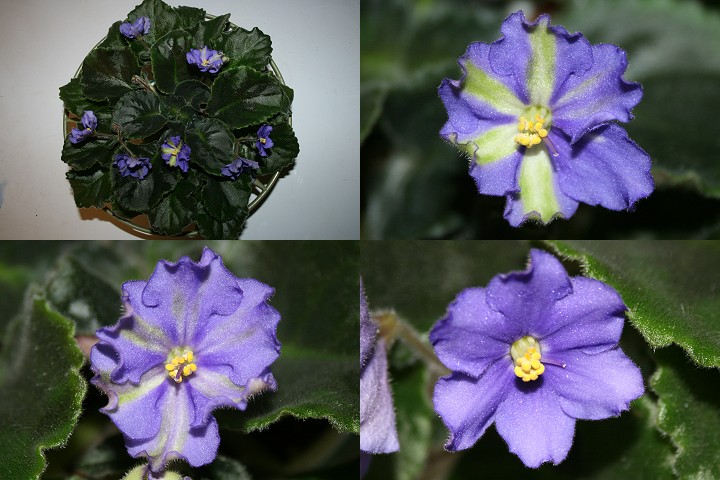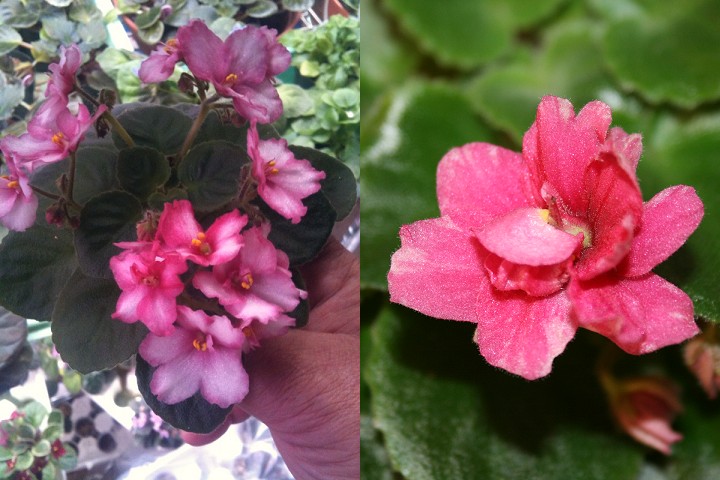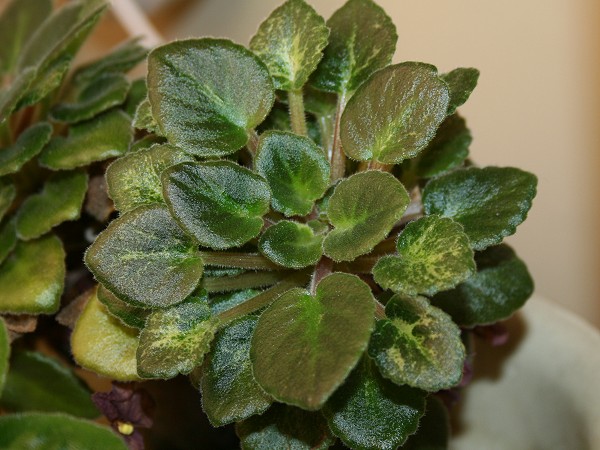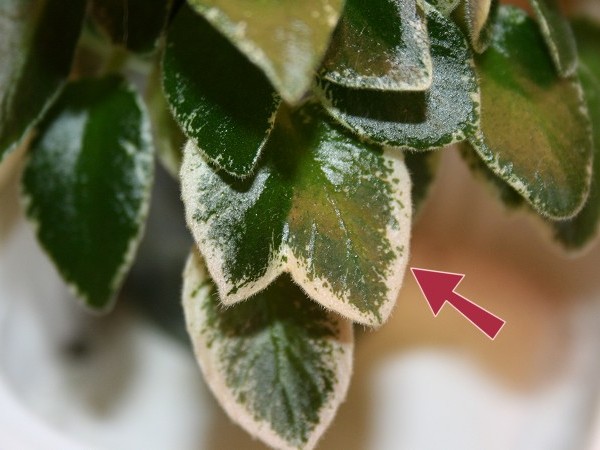Welcome to my blog! I plan to blog about all things African violet and related to that end. I hope you will find it interesting, and maybe even learn something new. More importantly, I hope to learn from you, so please feel free to add your comments, critiques, and criticisms at the bottom of the page. Thanks for visiting TheFranklinhouse!
![]()
September 30, 2010
I mostly grow semiminiatures, miniatures, semiminiature trailers, miniature trailers, a few small sinningias, two Episcias, and five standards. The five standards are 'Ness’ Blue Velvet', 'EK-Goluboglazaia Rossiia' (Blue-eyed Russia), 'Autumn Blues', 'Chicago Flair', and 'Yukako'. The reasons are as follows: 'Ness’ Blue Velvet', one of my all-time, top three favorite standards; I’ll always grow it. Blue Eyed Russia, a new variety for me in my favorite colors, blues and whites. I like to try new things from time to time in standards, albeit one at a time. 'Autumn Blues', an old favorite I try to keep in circulation. 'Chicago Flair', hybridized by Darryl Hoover specially for the 2001 Chicago National Convention, and a beautiful plant — 'nuf said. Finally 'Yukako', so unusual it was a must have. Now, the problem. My Yukako is sporting. It’s sad, because as you can see from the photo, the plant shapes up nicely for show. But, here you can see the progression of the sporting. It went from its vivid green stripe, to a faded stripe, to a light purple stripe, to finally losing the stripe and going solid. Looks like I will be down to four standards again. What will I get?

September 29, 2010
This past week was very special to me because two of my best Texas friends were here for a visit. What makes these folks even more special is that they are violet people! It’s so refreshing to be able to talk with people who share your hobby without their eyes glazing over after two minutes of conversation. Another great treat they brought was a violet care package hand picked just for me by Hortense Pittman. Yes, she sent me a whole box of her violets, her own hybrids, past, present, and to be released in the future! I sat down with that box like a kid in a candy store, and eagerly and gleefully pawed through all of my new hybrids. Some were some old favorites, and as mentioned, some are her new ones. I can’t wait to grow some older ones again and to try the new ones. Eventually, these plants will be available on my sale list. Prior to that though, I always pick from my un-listed violets to send bonus leaves and gift leaves with orders. So, keep that in mind when you’re thinking about where to place your next leaf order. :) Below are a couple of pictures of my special package.

September 28, 2010
One violet oddity that I had never encountered before is called "throwing a basket." This is when a flower stalk develops a plant at the end of the bloom stalk instead of blossoms. The bloom stalk forms, then in place of the sepals, (the two little leaves at the base of where the flowers form on the bloom stalk), there will be two flower buds. In place of the flowers, there will be the "basket," or the new plant. It resembles a stolon shooting off of an episcia. The difference between a sucker and a basket is, the sucker forms in between the base of the leaves at the neck. A basket, on the other hand, grows at the end of a bloom stalk. If left on, it will develop into a new plant. Or, it can be plucked off and propagated like a sucker.
My 'Cupid’s Kiss' is throwing two baskets right now. I’m not real happy about that, as it has a hundred other blooms coming and now I have to pluck out the basket stems — not good for a show. Kind of cool as a demonstration of this phenomenon. In the pictures below you can see the baskets peeking out from under the leaves. One picture shows the bloom stalk that it’s on. I’ve been growing violets for many years now, and I had never seen this before. Although after talking to a few violet veterans out there, I come to find it’s fairly common.

September 27, 2010
One of the oddities in the violet world is "sporting." This is when a violet sports, or mutates the blossom color from its true description to something else. Common effects of sporting are fantasy blossoms losing their fantasy, bi-colored blooms turning a solid color, and chimeras losing their stripes. Below is a picture of an example of a bi-color blossom sporting to a solid color. The first picture, courtesy of my friend John Regan, is how 'Jolly Mischief' is supposed to bloom. The second picture is what happened to my 'Jolly Mischief' due to my heat blast; the blossoms turned solid.

Hopefully, the next bloom cycle after these blooms are stripped off, it will bloom true again. I’m only hoping for that because my temperatures are now under control. If the plant has completely converted, then it will have to be given away as a "no-name," and I will get a new one, as my one stand only has room for potential show plants. Only if a plant sports to something new and unusual, and not characteristic of a parent plant, would you want to consider running it through the propagation course.
September 26, 2010
At the beginning of the season, the room where I have my plant stand was not air conditioned, and my plants spent over a month in severe heat. The temperature was never below 95°. Consequently I experienced an array of growth variations which I will explore with you over the next few posts. One of these violet oddities occurred in a plant of 'Red Bandito', which converted from a solid green leaf to variegated foliage. Many times I have seen a variegated plant lose its variegation due to warmer temperatures, but never vice versa. Below is a photo of 'Red Bandito'. If you look at the outer leaves, you can see where those leaves show variegation. That was when the plant was exposed to severe heat. The crown of the plant is the new growth since the temperature has been controlled. Luckily, the plant is converting back to its natural growth habit of the solid green leaves.

September 25, 2010
I have been observing some violet oddities in a few of my plants lately. Over the next few days, I will be sharing those with you. The first one you have probably seen before. It's a "twin" leaf. The leaf looks like a Siamese twin of two leaves grown together. This occurred on a plant of 'Shy Blue', a semiminiature. I've had it happen on all sized varieties of violets before. I'm not an official African violet judge, so I don't know what would happen if you showed a plant with a twin leaf. Maybe some judges out there can send me some feedback.

Below are comments from our visitors. Scroll to the bottom to add your comments.
Fatal error: Uncaught Error: Call to undefined function mysql_connect() in /home/thefra7/public_html/comments/comments_show.php:33 Stack trace: #0 /home/thefra7/public_html/blog1.php(81): include() #1 {main} thrown in /home/thefra7/public_html/comments/comments_show.php on line 33

